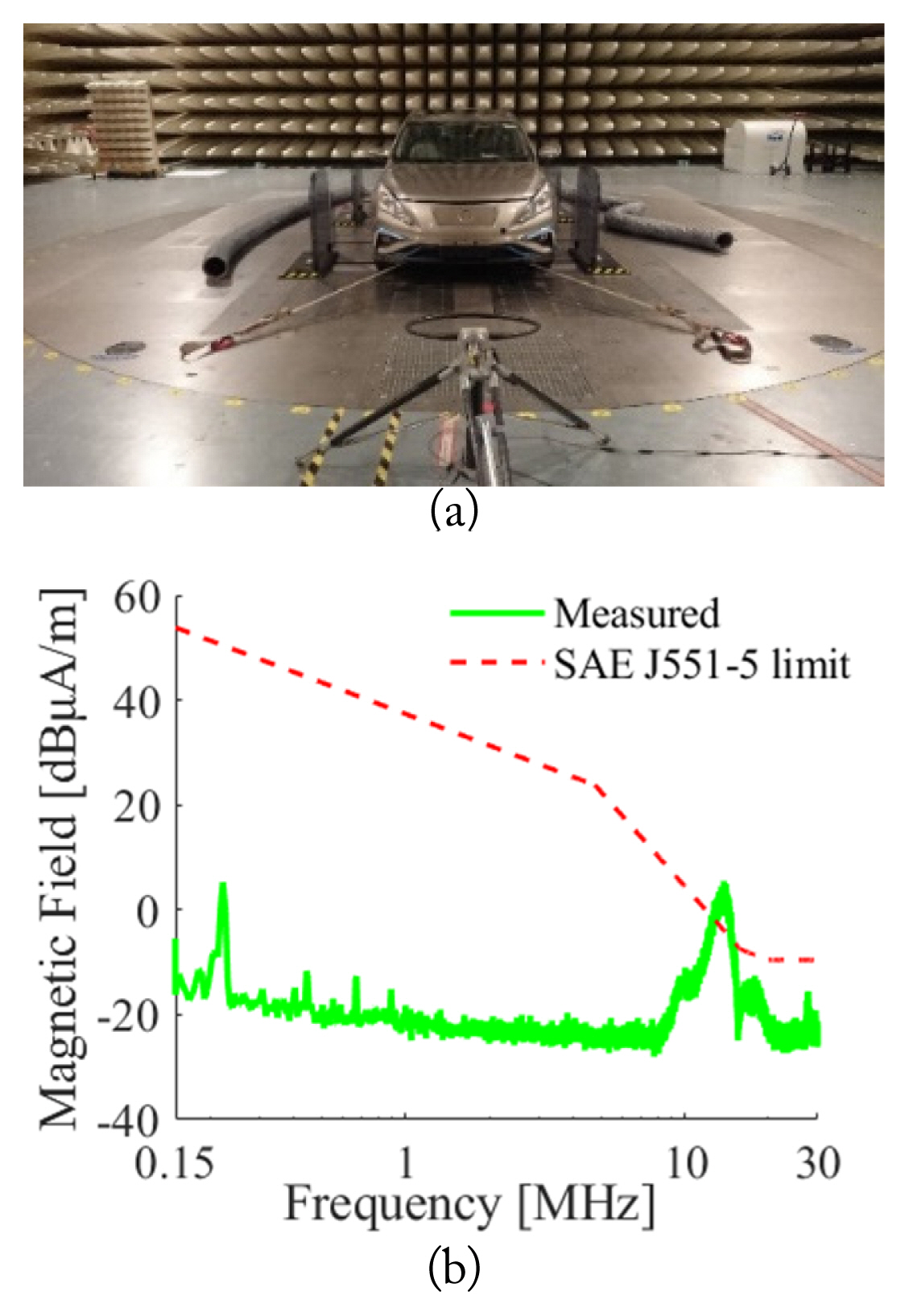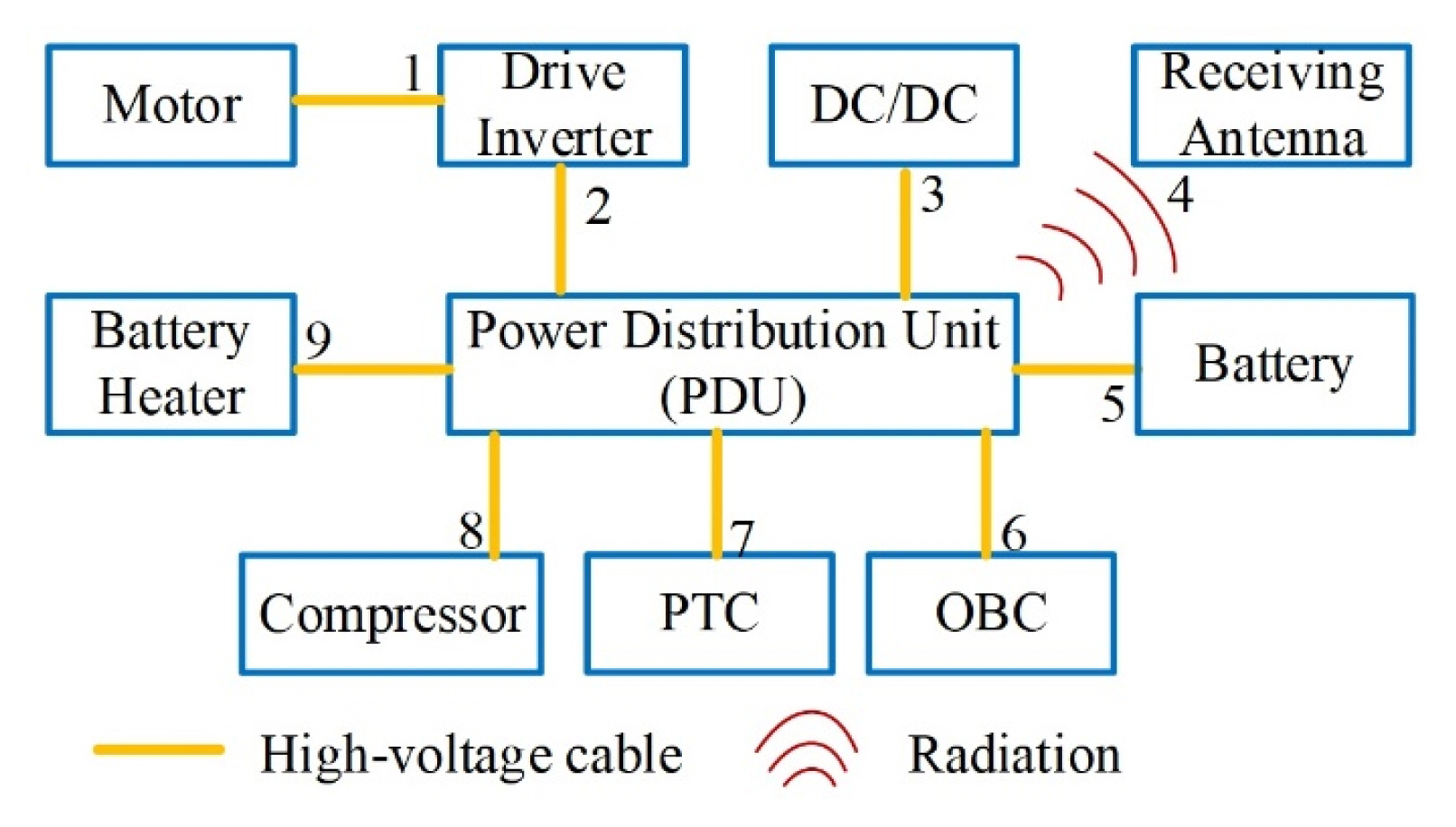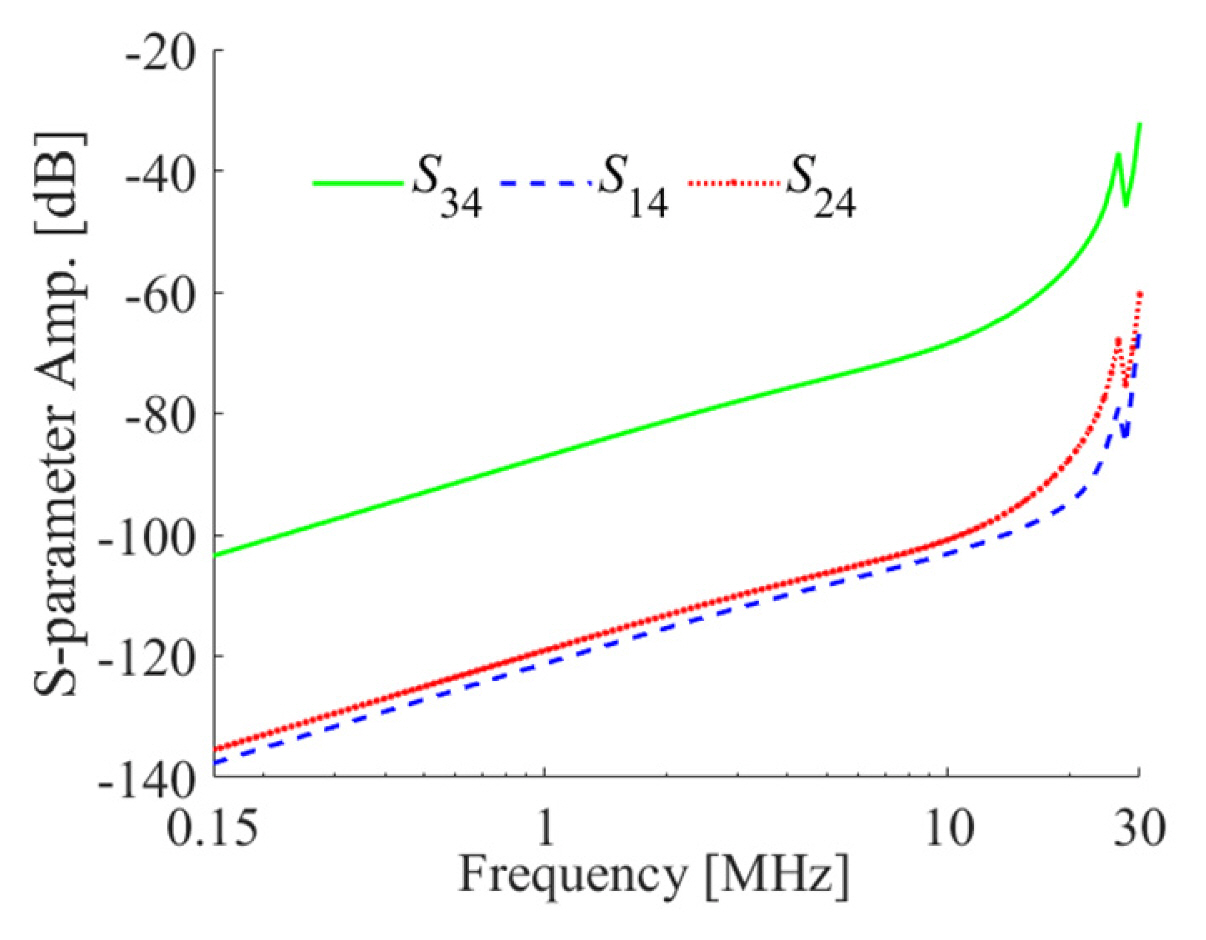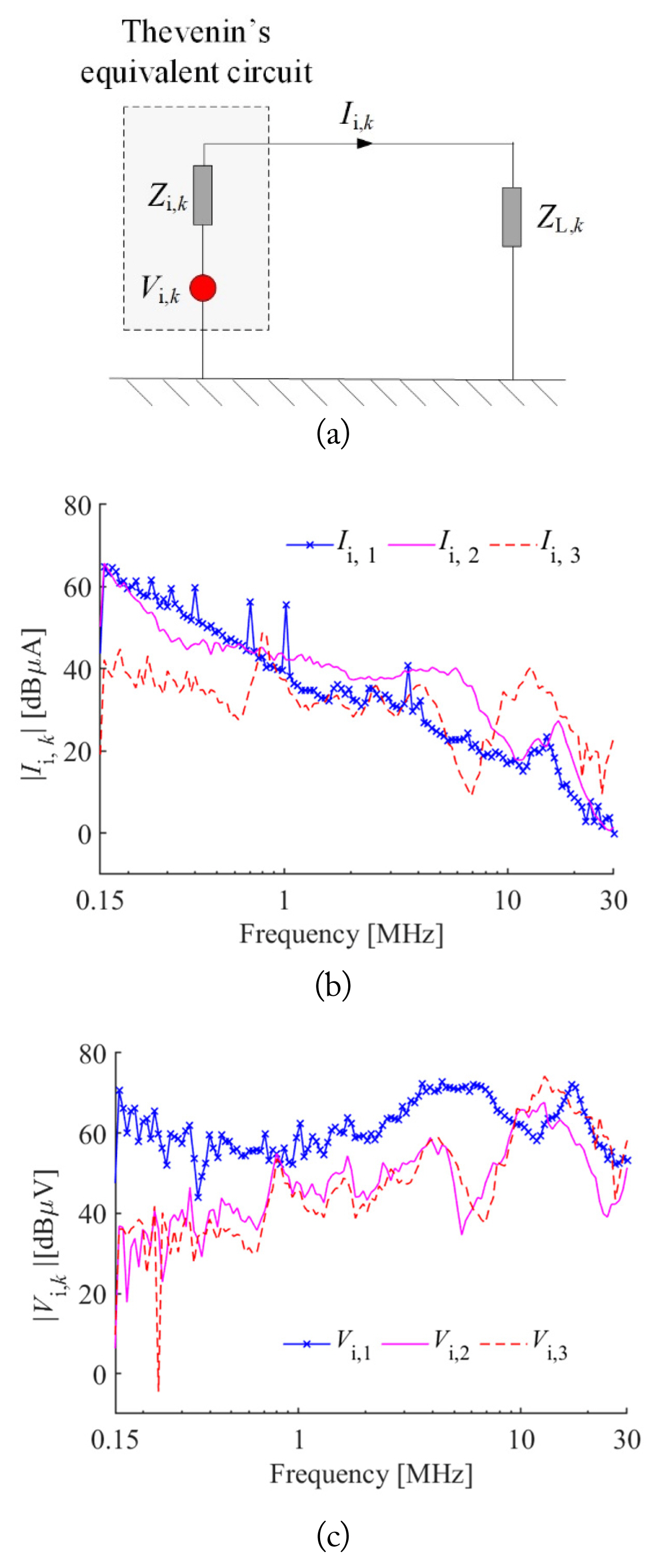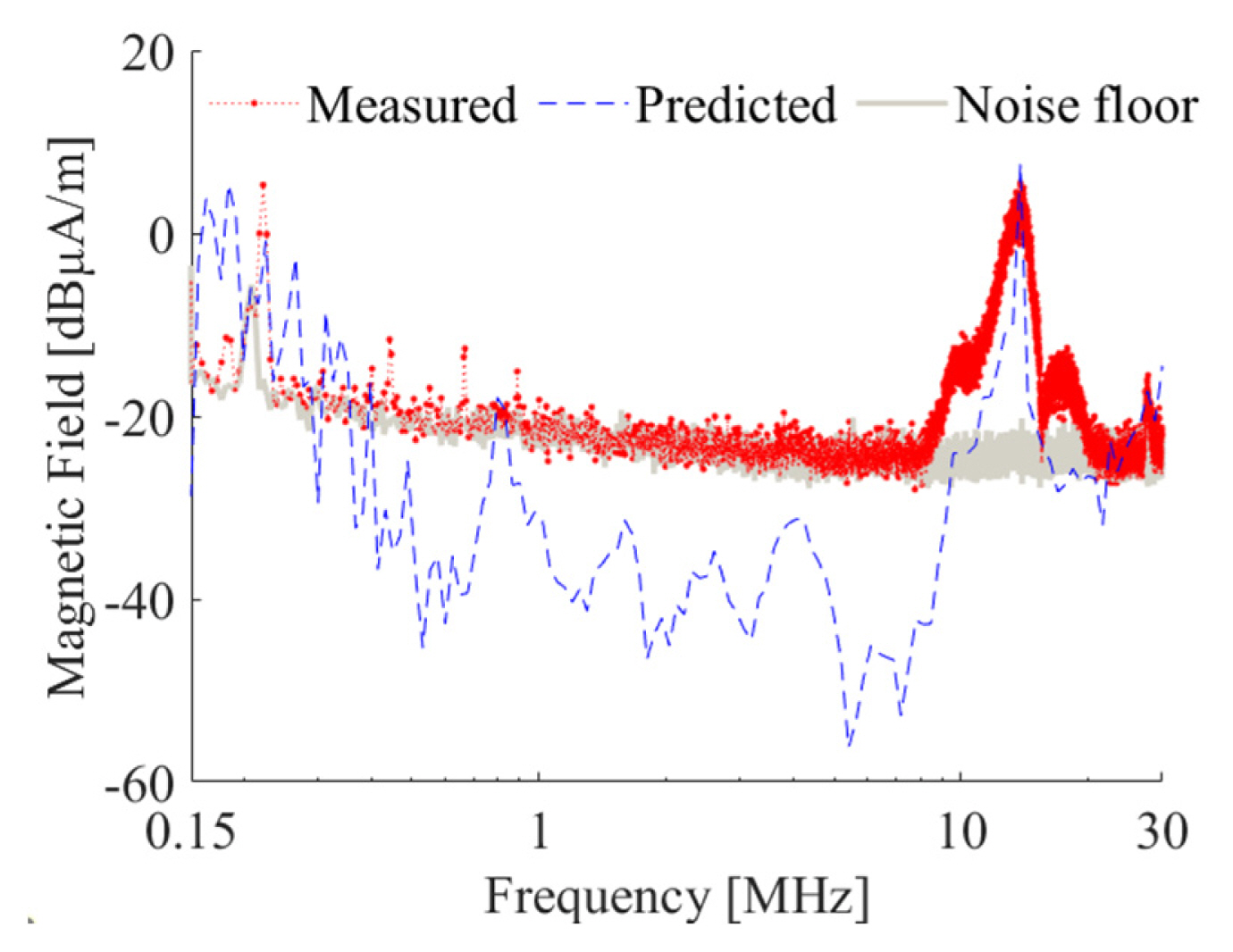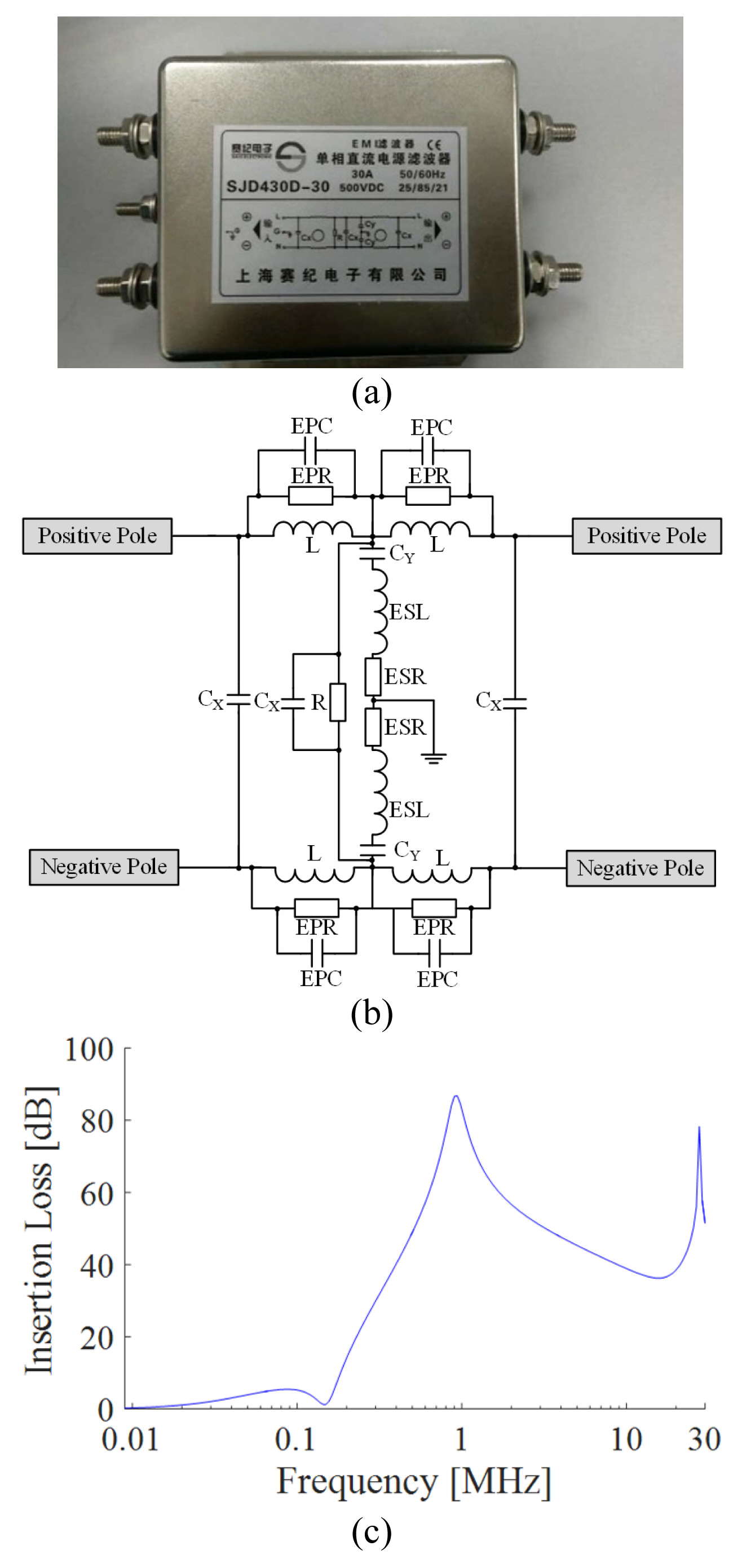I. Introduction
II. Problem Description
III. Modeling The VehicleŌĆÖs Magnetic emissions
1. Analysis of the VehicleŌĆÖs High-Voltage System
Under the test conditions required by SAE J551-5, components such as the PTC, OBC, and compressor are inactive so that radiation is caused only by DC/DC and the traction system due to their internal electronic power devices with high-frequency switching.
Since the positive and negative high-voltage cables are routed parallel and close to each other with fine shielding, the vehicleŌĆÖs emissions are mainly generated by CM interference.
Most interferences are radiated by the high-voltage cables because [23, 24] (1) the power components are packed in metal shells with fine shielding and (2) their size is much smaller than the wavelength of the EMI in question and the length of the high-voltage cables.
2. Equivalent Multi-port Network Model
As discussed in Section 1, magnetic energy is mainly radiated from the high-voltage cables, which are a linear component, so the couplings among different parts can be described by a network model.
The nonlinear parts of the power components are packed in metal shells, and their size is comparatively small, so they can be characterized by equivalent voltage/current sources with internal impedances.
The Z-parameter of the network is independent of the impedance of the parts connected to the network [8], so the model parameters of the network and components can be obtained separately using different methods.
(1)
3. Numerical Calculation of the NetworkŌĆÖs Z-parameter
It is difficult to measure the high-frequency impedance of a network directly because the required test condition of an open/short circuit is impracticable, especially when the frequency is high.
Alternatively, the Z-parameter can be obtained from the S-parameter. However, the central network shown in Fig. 3 has nine portsŌĆömany more than the measurement ports of a common vector network analyzer (VNA).
Even if we have a VNA with more than nine ports, the additional connection cables will aggravate the measurement noise because the components are dispersedly located in different positions in the EV.
The nonmetallic components, comparatively small structures and electrical components, and low-voltage wiring harness are removed or smoothed.
The thickness of the bodyŌĆÖs steel sheet is ignored, and the vehicleŌĆÖs body is reduced to a two-dimensional surface.
The internal structures of the power components are not considered because they are packed in metal shells with fine shielding, and their size is comparatively small.
Since only CM radiation is considered in this study, the high-voltage cables with their shield are compressed along the radial direction and modeled as lines in Feko.
The line model of the high-voltage cables is directly generated from the centerline of the 3D harness model.
4. Measurement of Equivalent Circuit Parameters
Since only CM interferences are considered, the shielding layer and positive and negative wires of the high-voltage cables are combined and regarded as one wire.
The equivalent impedances Zi,k, Zs,k, and ZL,k are measured using a VNA with the EV powered off.
To reduce parasitic effects when measuring the impedance, the wire is connected to the VNA through a coaxial adapter that is welded to the wire.
The interference current Ii,k is measured using a broadband current clamp in the position closest to the component connector in the actual vehicle.
To ensure accuracy when measuring the interference current, the working condition of the EV is the same as the SAE J551-5 requirement.
5. Model Accuracy Validation
IV. Model-based Improvements
1. Evaluation Index Design
Contribution, which measures the emission generated by an influencing factor.
Sensitivity, which characterizes the room for improvement.
(8)
(9)
2. Importance Analysis
3. Improvement of Vehicle Magnetic Emission
V. Conclusions and Future Work
The proposed network model can accurately predict a vehicleŌĆÖs low-frequency magnetic emissions. The impedance of the global network and the port node can be decoupled using the Z-parameter, and different methods can be used to obtain the parameters of the network model separately.
The designed evaluation index can measure the influence of technical factors on a vehicleŌĆÖs magnetic emissions by comprehensively considering their contributions and sensitivity. Engineers can directly determine the main interference source according to the evaluation score without resource-intensive experimental diagnosis and evaluation processes.
The proposed EMI suppression approach can sufficiently attenuate the interference generated by DC/DC so that a vehicleŌĆÖs low-frequency emission meets the SAE J551-5 requirement.
In this study, it is assumed that the equivalent impedance of the circuit node is independent of its working state. This assumption does not hold true if the circuit has high nonlinearities.
The equivalent impedance of the circuit node is measured in a power-off state. Measuring the equivalent impedance when the circuit is activated remains a problem, especially for high-power switching circuits.
During the improvement process, it is still a problem that how to use the proposed network model to quantitatively assess the effectiveness of the possible solutions.
In this study, the proposed method is used to address a low-frequency emission problem. The problems about application to the prediction of high-frequency emission need to be further studied.




